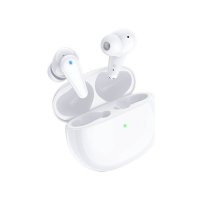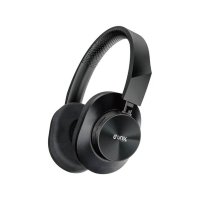How to Choose Headphones for Kids: Safety and Sound Quality Tips
Choosing the right headphones for kids involves more than just picking a cute design. It’s essential to consider safety and sound quality to protect your child's hearing and ensure they enjoy a good audio experience. Here’s what you need to know.
1. Volume Limiting
Why It Matters: Children's ears are more sensitive to loud noises, which can cause permanent damage. Headphones designed for kids often come with volume-limiting features, capping the sound level at a safe threshold, typically around 85 decibels (dB).
What to Look For: Check for built-in volume limiting or adjustable controls. Some models also have parental control options, allowing you to set the maximum volume through an app.
2. Comfort and Fit
Why It Matters: Ill-fitting headphones can cause discomfort and discourage use. Kids are more likely to wear headphones that are comfortable and designed to fit their smaller heads.
What to Look For: Look for adjustable headbands, cushioned ear pads, and lightweight designs. Over-ear headphones are often more comfortable for extended wear, while in-ear options may be less suitable for younger children.
3. Durability
Why It Matters: Kids can be rough on their belongings, so durability is key. Headphones that can withstand drops, tugs, and rough handling will last longer.
What to Look For: Seek out models with reinforced cables, robust headbands, and materials designed to endure everyday wear and tear. Some brands offer warranties that cover accidental damage.
4. Sound Quality
Why It Matters: While safety is the priority, sound quality shouldn’t be overlooked. Kids deserve clear, crisp audio, whether they're listening to music, audiobooks, or educational content.
What to Look For: Choose headphones with a balanced sound profile. Avoid models that overly emphasize bass, as they can be harsh on young ears. Some kid-friendly headphones are tuned specifically for clarity in voices and mid-range frequencies, which is ideal for learning and listening to spoken content.
5. Wired vs. Wireless
Why It Matters: Both options have pros and cons. Wired headphones eliminate the risk of exposure to radio frequency (RF) emissions but can be cumbersome with tangled cables. Wireless headphones offer freedom of movement but need regular charging.
What to Look For: Consider your child's needs. If they’ll be using the headphones for travel or school, wireless models with long battery life and Bluetooth connectivity might be more convenient. For younger children, wired options with a single cable might be safer and easier to manage.
6. Design and Aesthetics
Why It Matters: Kids are more likely to use headphones that they find visually appealing. Fun colours, patterns, and character-themed designs can make the experience more enjoyable.
What to Look For: While aesthetics shouldn't be the sole deciding factor, it’s worth considering designs that your child will love. Some headphones even come with interchangeable covers or stickers for customization.
7. Age Appropriateness
Why It Matters: The age of the child plays a significant role in what type of headphones are most suitable. Very young children may need simpler, more intuitive controls, while older kids might appreciate more advanced features like noise cancellation.
What to Look For: Choose headphones that match your child’s age and maturity level. Younger kids might benefit from headphones with fewer buttons and larger, easy-to-use controls. Older children may prefer features like active noise cancellation or built-in microphones for gaming and communication.
8. Safety Certifications
Why It Matters: Headphones that meet safety standards can give you peace of mind that the product is designed with your child’s well-being in mind.
What to Look For: Look for certifications such as the CE mark in Europe, which indicates compliance with health, safety, and environmental protection standards. Also, consider checking for reviews and endorsements from trusted consumer organizations.
9. Price and Value
Why It Matters: Kids’ headphones are available at various price points, but the most expensive option isn’t always the best.
What to Look For: Balance cost with the features you value most. It’s possible to find reasonably priced headphones that offer a good combination of safety, durability, and sound quality.
Conclusion
Choosing headphones for kids requires careful consideration of both safety and sound quality. By focusing on features like volume limiting, comfort, durability, and age appropriateness, you can find a pair that keeps your child’s ears safe while providing a great listening experience. With the right headphones, your child can enjoy their favourite audio content in a way that’s both fun and safe.



